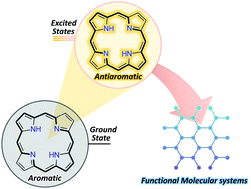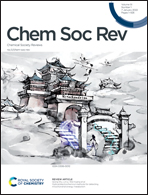Porphyrinoids, a unique platform for exploring excited-state aromaticity
Abstract
Recently, Baird (anti)aromaticity has been referred to as a description of excited-state (anti)aromaticity. With the term of Baird's rule, recent studies have intensively verified that the Hückel aromatic [4n + 2]π (or antiaromatic [4n]π) molecules in the ground state are reversed to give Baird aromatic [4n]π (or Baird antiaromatic [4n + 2]π) molecules in the excited states. Since the Hückel (anti)aromaticity has great influence on the molecular properties and reaction mechanisms, the Baird (anti)aromaticity has been expected to act as a dominant factor in governing excited-state properties and processes, which has attracted intensive scientific investigations for the verification of the concept of reversed aromaticity in the excited states. In this scientific endeavor, porphyrinoids have recently played leading roles in the demonstration of the aromaticity reversal in the excited states and its conceptual development. The distinct structural and electronic nature of porphyhrinoids depending on their (anti)aromaticity allow the direct observation of excited-state aromaticity reversal, Baird's rule. The explicit experimental demonstration with porphyrinoids has contributed greatly to its conceptual development and application in novel functional organic materials. Based on the significant role of porphyrinoids in the field of excited-state aromaticity, this review provides an overview of the experimental verification of the reversal concept of excited-state aromaticity by porphyrinoids and the recent progress on its conceptual application in novel functional molecules.

- This article is part of the themed collection: Trends and Challenges in Porphyrinoid Chemistry


 Please wait while we load your content...
Please wait while we load your content...